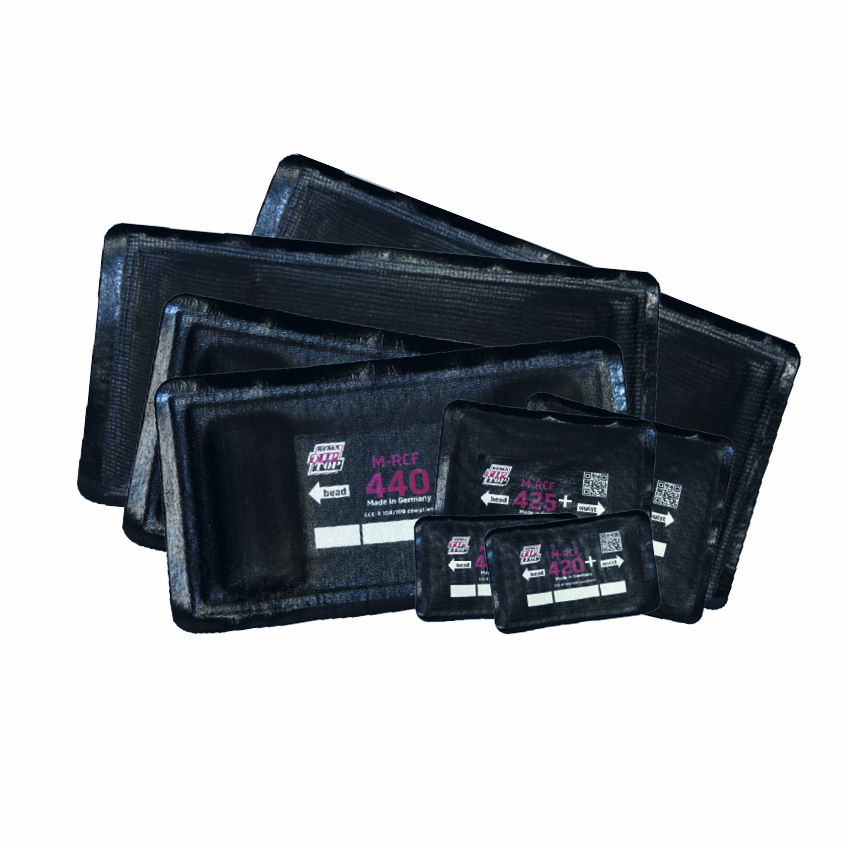Rema Tip Top extends solvent-free patch portfolio
 Rema Tip Top has added new patch sizes to the M-RCF 400 range in response to customer demand
Rema Tip Top has added new patch sizes to the M-RCF 400 range in response to customer demand
Recent product developments at Rema Tip Top have focused on tyre repair technology, and one result is a “ground-breaking’” innovation: The M-RCF 400 (Multi Radial Cement Free) patch series. Rema Tip Top says the M-RCF 400 delivers “both ecological and economic advantages for the repair of car and truck tyres.” Notably, the patch can be fitted without the need for solvent-containing chemicals. The associated products needed for repair are also free of CFCs.
The solvent fumes, extraction systems and workplace measurements associated with fitting patches are now a thing of the past with M-RCF, says Rema Tip Top. The retreading materials supplier observes that their avoidance represents “a major criterion for the choice of product by workshops,” as workshops face increasingly tighter legislation in many markets.
Damage can be quickly and easily repaired in a single-stage vulcanisation process (hot vulcanisation of the patch) without the need to apply cement. Thanks to a high degree of efficiency in the repair process, as well as simplification of the work steps involved, the working time required for repair can be cut by up to 40 per cent.
With the introduction of the solvent-free system, Rema Tip Top has brought to market patch sizes that are suitable for repairing the type of damage commonly inflicted upon truck tyres. Commenting that demand for its patches has “developed so positively over time,” Rema Tip Top shares that these additional patch sizes were introduced in response to requests received from repair technicians. “This is why Rema Tip Top are now giving customers the opportunity to purchase special patch sizes for tread and shoulder damage from our M-RCF range.”
M-RCF patches consist of different cord fabric layers that correspond to the structure and material type of the tyre cord. To produce a patch, these layers are stacked and then cured in a heat press that bonds them together. “Originally, production employees used a type of modular system with fabric layers in certain standard sizes,” Rema Tip Top explains. “But since they are not suitable for the newly introduced patch sizes, the cord layers will now be measured separately for each individual patch size.”





Comments